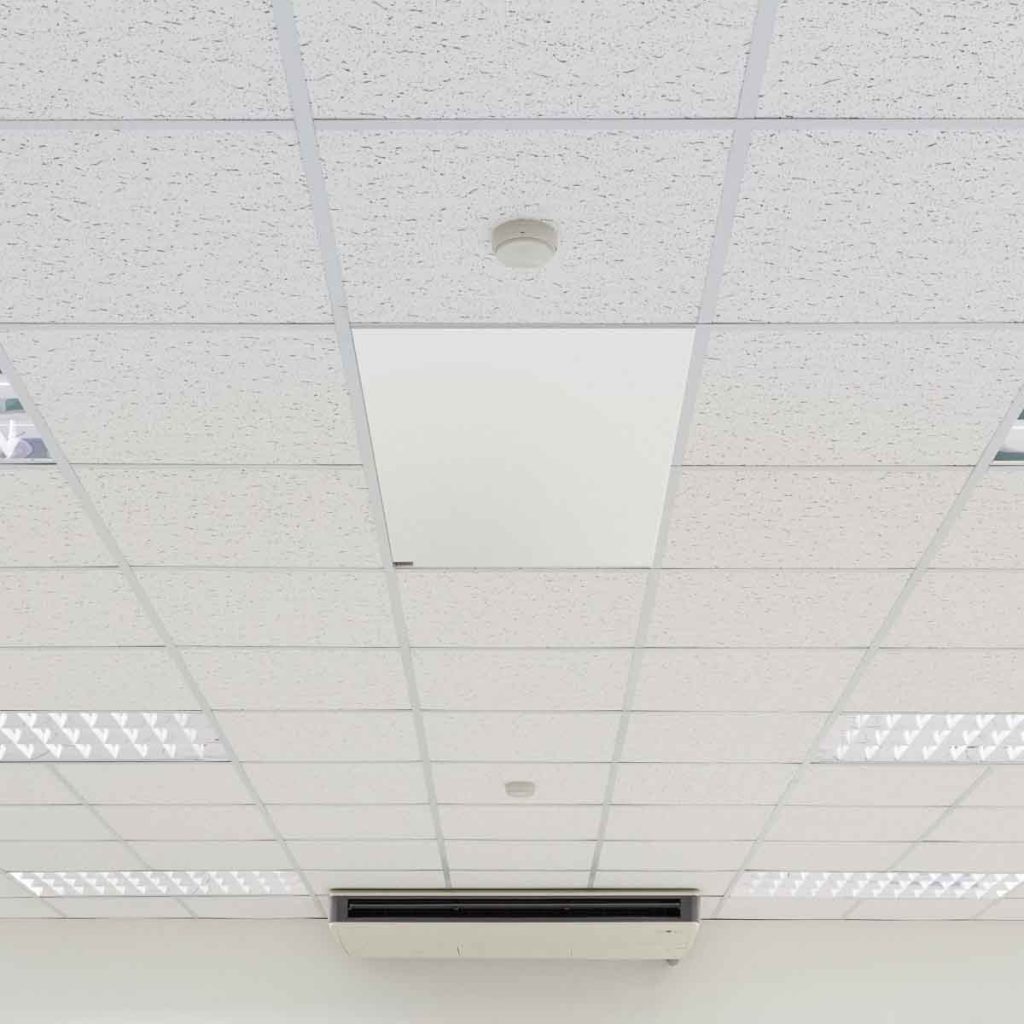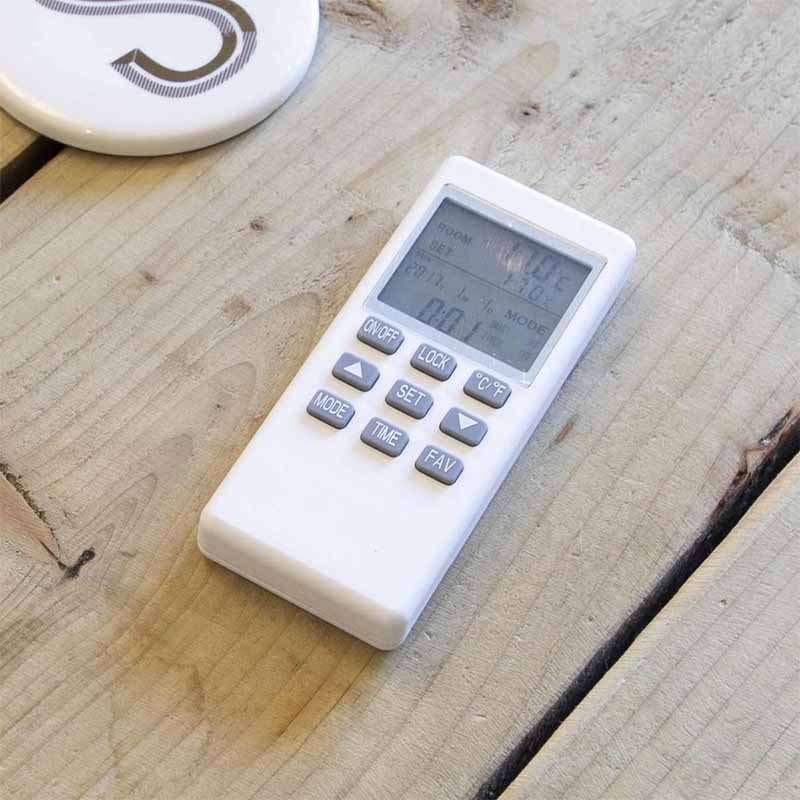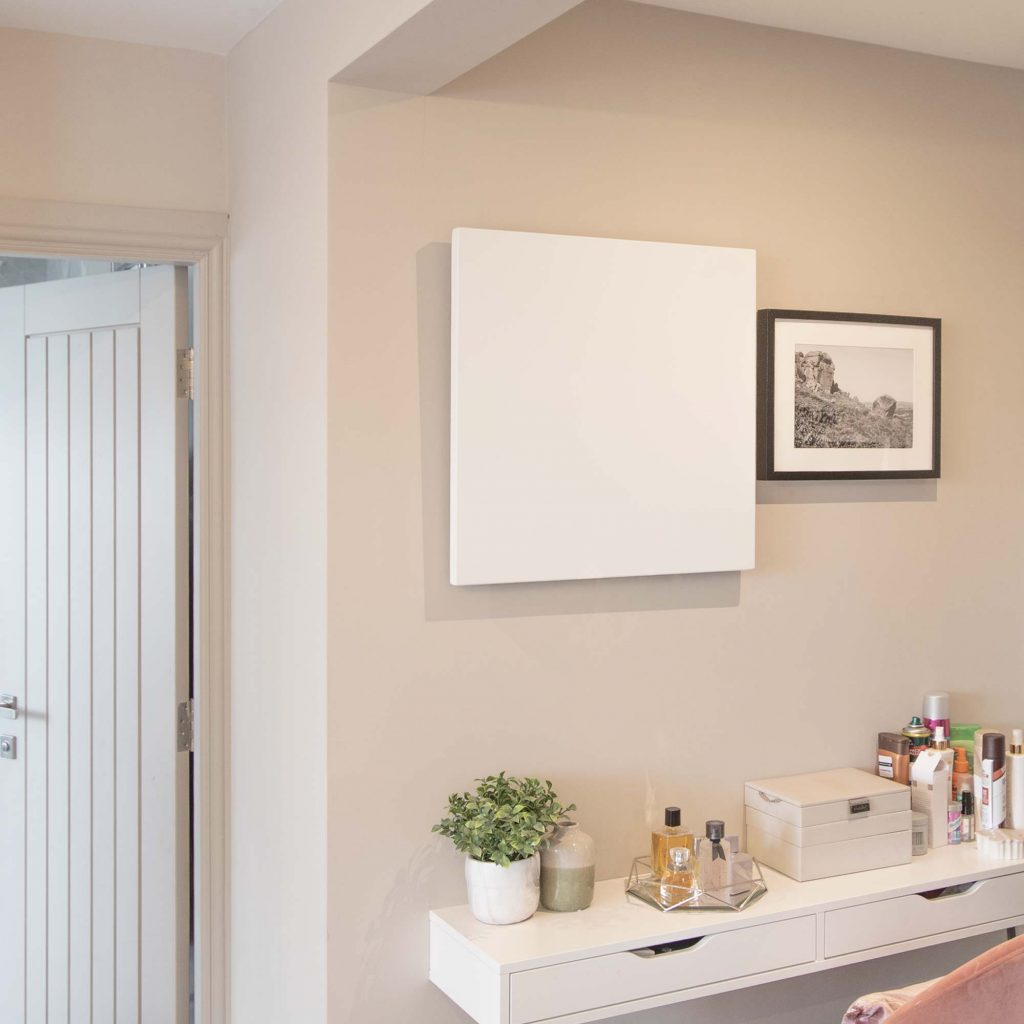Millions of homeowners are looking for new ways to keep running costs down, and switching to an efficient, cost-effective heating alternative to gas is one way to do that. If you’re looking to install infrared heaters in your home, having an idea of their running costs will help you decide whether they’re right for you – and as much as we’d love to give you an exact figure, it’s more complicated than a cut-and-dry equation. One thing we can say with complete confidence is this: infrared heating can help keep heating bills down. So, whether opting for an ultra-slim infrared panel or high-powered patio heater, here’s everything you need to know about working out the running costs of infrared heaters.
Running costs: what to consider
First, let us explain why working out the running costs isn’t as simple as putting a few figures through a calculator. As everybody’s living situation is different – even if that’s by a fraction of a degree – there are certain factors to consider that’ll muddy the numbers before you’ve even begun:
House region
It’s no secret that electricity prices vary from region to region. This is attributed to a lot of reasons; mainly how much energy is produced per area and how much it costs to do so. Whether it’s the prices attributed to transporting energy from power stations, how much energy is produced from renewables, or how many suppliers purchase from the National Grid, these reasons and more play a part in how much we end up paying for electricity.
Weather & seasonal changes

Coming as a surprise to no one, the time of year affects how much we have our heating on. Thanks to climate change, the way we experience seasons and weather in general is becoming more and more unpredictable, so trying to accommodate every outcome is pretty impossible.
Room size & insulation
The age of your property will give you a good indication to its insulation levels: houses built before the ‘70s didn’t come with loft insulation and pre-2002, windows were only single glazed. Open plan spaces and rooms with high ceilings are also going to require more power to heat than a new build with low ceilings, so keep this in mind when making your estimates.
Exposure levels
How exposed your house is to the elements plays a big role when it comes to your heating: a mid-terraced house with low ceilings can retain heat much easier than a north-facing detached property, and your outdoor patio heater is going to have to work harder on a winters’ day than the panel in your cosy office.
How to work out the running costs of infrared heaters
Now you know why working out the running costs of infrared heating isn’t so black and white, there’s still a simple DIY calculation you can try to give you a general idea. Before you do, there are a few things you need to know:
- The wattage of your heater in kilowatts – Having the right size infrared heater is important, otherwise you risk over or underheating your space. Check out our handy infrared room calculator to give you the minimum recommended wattage. It’s totally simple, just fill in your room measurements and property type and you’re good to go.
- The number of hours you expect to run your heating per day –As we’ve mentioned, the time of year will play a big role in how long you plan on having your heating on. Of course, personal preference is also a significant factor.
- Your energy tariff in pence per kilowatt hour –Your energy provider and house region will affect how much your electricity costs. It’s always a good idea to compare suppliers to see if you can get a better rate.

Multiply all these together to get the daily cost of your infrared heater.
Our DIY calculation
Take our bestselling Ecostrad Opus iQ wall panel. You’ve just bought the 580w version and you plan on running it for 4.5 hours a day:
- 0.58kW x 4.5h = 2.61kWh
- 2.61kWh x £0.34 = 89p per day
Take this final figure with a pinch of salt. You already know why it may not be accurate, but there’s another reason: infrared heaters are one of the most efficient heating solutions available. Whatever wattage your heater has, it’s very doubtful it’ll need to run at its maximum output in order to comfortably heat your home. In fact, it’s more likely that it’ll only need to use a third of the energy estimated, slashing that final figure, and giving you a more realistic idea of the running costs of your infrared heater:
- £0.89 ÷ 3 = 30p per day
Much better. So, how exactly does infrared heating help slim down your bills? Let’s find out.
How infrared heaters keep costs down
100% radiant warmth
Unlike convection heaters, infrared heaters provide directional, radiant warmth: heating people, objects, and sinking deeply into the walls of your property. Infrared heaters are at such an advantage because the heat they produce doesn’t rely on the circulation of air. By not disturbing air movement, they can work more efficiently and deliver longer-lasting warmth: heat isn’t lost to draughts or high ceilings, so they don’t have to work as hard as a convection heater of the same wattage to maintain comfort levels. Right off the bat, you’re already saving with infrared.
Zoned heating

Free from the constraints of plumbing, pipework, and a centralised system, infrared heaters work independently, so you can heat your home on a room-by-room basis. They also allow greater control over their convector counterparts, allowing you to focus heat exactly where you want it. Now, as trendy as open plan living is, heating these areas can be a pain. With infrared heaters, you can place them in strategic positions to direct their warmth to the busiest areas. This of course extends to larger commercial and outdoor spaces too, which are notoriously hard to heat the traditional way. By creating heating zones you’re cutting out the chance of waste and experiencing cheaper and efficient heating year-round.
Energy efficiency
With gas central heating, heat loss is unavoidable due to the combustion process and poorly insulated pipework. Infrared heaters on the other hand are 100% efficient at point of use, so every watt of energy drawn from the mains is converted into useable heat. When energy bills are at the forefront of everyone’s minds, it’s reassuring to know that with infrared, absolutely nothing is wasted, so you’re only paying for the energy you use. You could even pair your infrared heaters with solar panels or a green energy provider to make your heating completely efficient from start to finish.
DIY-friendly installation
Most of our infrared heaters are installable straight out of the box, with no complicated wiring or jargon-heavy manuals in tow. Whether freestanding, wall or ceiling mounted, installing your infrared heaters is a breeze. We always recommend professional installation if you plan on installing them outside or decking out your whole home with electric heating; this is to avoid overloading the ring main and tripping your electrics. Hardwiring will also offer a totally wireless look – perfect for maintaining a clean aesthetic feel. If it’s just one or two heaters, however, then you’re good to go. We have a wide range of DIY-install infrared heaters, so check them out for a fuss-free heating solution.
Zero maintenance
That’s right. One of the many benefits of owning infrared heaters is their longevity despite requiring minimal upkeep. As they contain no moving parts and don’t rely on a combustible fuel source, there’s not a whole lot that can go wrong. There’s no risk of carbon monoxide leaks either which completely removes the need for servicing. Frankly, all the maintenance an infrared heater needs is the odd clean with a soft, dry cloth to keep the unit dust-free.
Innovative programming
With complete programming prowess, there’s an infrared heater to suit any preference. All of our infrared panels can be paired with an external control system to give you absolute freedom over the way you heat your home: from thermostatic, push-button to WiFi-enabled. With each type of heater offering a wealth of energy-saving features, slimming down bills is effortless.

- Remote control – Set bespoke heating schedules, use the timer function, pre-heat rooms and enable open window detection with the touch of a button. Remote control is quick, simple, and can be done from the comfort of your chair. As the room thermostat is contained within the remote, you can use it on all of your compatible heaters for ultimate convenience.
- Smart control – Take heat management to the next level and be in control wherever you are. Smart control allows you to pair your heater to an app or smart speaker so you can make changes over WiFi instantly. Schedules can be copy and pasted throughout the week or completely finetuned to complement busy lifestyles, so you never have to waste money heating an empty property again. With smart control you’re always in the drivers’ seat when it comes to energy usage – a guaranteed way to save you money in the long run.
Save money with infrared heaters
While working out the running costs of infrared heaters isn’t so clear-cut, the fact they can save you money on your heating bills isn’t. So, browse our full range today: whether you’re looking for a heater for your garage workstation, a ceiling panel for your kids’ playroom, or a robust patio heater for your back garden. Conservatories, warehouses, bathrooms or office spaces – whatever the room, whatever the property, save money with infrared heaters.



